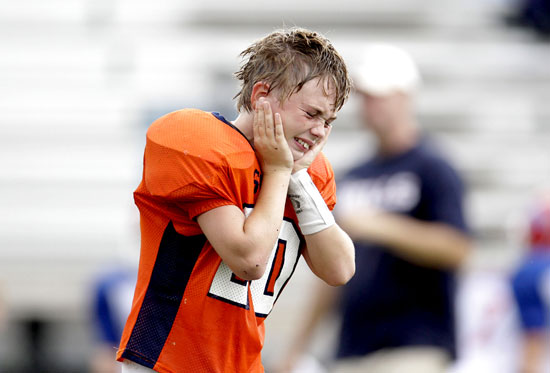A heads-up on concussion risk
June 26, 2014
You’ve seen the recent headlines: Contact sports often lead to concussions, with possible long term effects. Earlier this month, former Miami Dolphins quarterback Dan Marino and 14 players became the latest to sue the NFL over concussions. Last year, PBS’ Frontline program League of Denial won a Peabody Award for investigating the NFL’s concussion crisis.
The story does not end with professional or even college sports: Studies show high school athletes are at double the risk of concussion as college players. Experts are also concerned about the cumulative effect of repeated concussion, which has been linked to temporary and permanent changes in the way the brain functions.
Heightened awareness is leading more young athletes to seek medical evaluation for possible concussions. The State of California has required concussion training for school coaches since Jan. 1, 2013.
Now, a new report by the Los Angeles County Department of Public Health provides a first-ever look at the problem of concussions in the L.A. region—and how rising awareness is leading to more and quicker treatment.
Overall, researchers found that 69,000 people were treated in emergency departments or admitted to hospitals in the county for concussions between 2005 and 2011. During that time, hospitalizations remained steady but the rate of emergency room visits soared by 58%–a finding that public health officials say reflects the public’s growing understanding of concussion symptoms and the importance of seeking medical attention.
By far, the highest rates of emergency visits were for young adults between the ages of 15 and 24. They accounted for nearly 30% of all such visits, almost twice as high as for any other age group. Roughly half of those individuals were hurt while playing football, with another 20% suffering injuries during soccer games. (Falls were the main cause of concussions among all age groups in L.A. County.)
While these findings were not unexpected for this younger age group, researchers were surprised by one unexplained discovery: Females, they found, reported more concussions than men in sports in which both play under similar rules, including basketball and soccer.
“It could be biomechanical, the way females are built versus males,” said Dr. Margaret Shih, director of the public health’s office of health assessment and epidemiology. She said it’s hard to draw a conclusion because women are traditionally more likely to seek medical help than men. “There’s still a lot of research that needs to be done,” she said.
County health officials say they hope their report will lead to heightened awareness not only in our emergency rooms, but on the playing field. And despite the rising numbers of emergency department visits, they think the numbers are still too low.
“I do believe that concussions are underreported,” said Andrea Welsing, director of the injury and violence prevention program for the public health department. She added that pressure to play is still keeping many injured athletes in the game, putting them at risk of further injury.
Although the report will not be distributed in hard-copy form, Welsing said the plan is to launch an e-mail campaign to include parents, coaches, teachers, pediatricians, sports medicine physicians, recreation center personnel and school nurses.
Welsing said the health department is not expecting schools and other youth sports organizations to hire additional medical staff, but rather to train coaches and others to recognize symptoms and realize the importance of taking a player out of the game until he or she can be medically evaluated.
Steven Grech, assistant athletic director for sports medicine and head athletic trainer at California State University, Northridge, said his university has done baseline testing for concussion for all contact sports since 2006. But the effort became more formalized in 2010, when the NCAA began requiring Division 1 institutions, including CSUN, to have a formal concussion management plan.
The biggest recent improvement at CSUN is in student awareness —the 2010 requirement included student education along with faculty training. Grech said CSUN fosters a culture where players look for symptoms in their teammates and roommates, not just themselves. This is particularly important during the summer, when there are no official team practices but athletes are still playing to stay in shape, Grech said.
“We have kids coming in saying, ‘Hey, I was playing pickup basketball just last night and got hit in the head and I’ve had a headache ever since, I couldn’t sleep last night, I’ve been dizzy,’” Grech said. “We’ve seen an increase in self-reporting over the last four years.”
Posted 6/26/14













 405 bridge work causes a stink
405 bridge work causes a stink
